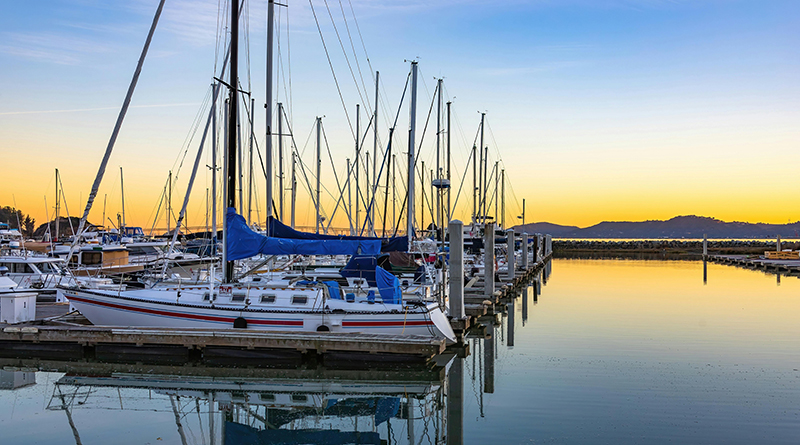STATEWIDE—And then there were only 10. No need to apply within for job openings of doomsday spokesperson, as the vaquita porpoise might be fully extinct before the end of this decade – which, by the way, is less than eight months away.
The Log, in our coverage of the marine mammal in 2017 and 2018, reported there were 30 or fewer vaquitas remaining in the world. Alarm bells are ringing louder as an international committee of scientists recently reported the vaquita population dropped from 30ish … to about 10. Animal Welfare Institute actually reported a range of remaining vaquita, stating, in a March 14 statement, there are between six and 22 of the marine mammal species still alive. Efforts to raise awareness of – and save – the vaquita, which calls the upper shores of Baja California’s Sea of Cortez home, are, accordingly, failing.
Now it is still possible for the vaquita to make a miraculous comeback, joining the ranks of the southern sea otter, humpback whale and green sea turtle as species triumphantly rebounding from endangerment or extinction.
The vaquita’s culprit: drift gillnets placed along the floor of the Sea of Cortez by commercial fisheries. Those fisheries have actually been targeting valuable...







11 Responses
If there are less than a dozen vaquita currently in the wild, and none in captivity to breed, they will be extinct by the end of the decade, which, by the way is on 12/31/2020, not 12/31/2019. Decades are always supposed to start with year 1, not year 0.
Why are there none in captivity breeding now? Anyone know??
Doug,
For a detailed account see the book by Brooke Bessesen. But the short version is that porpoises don’t fare well in captivity. Only a handful of harbor porpoises have been kept in captivity and they have not bred successfully.
When 2 vaquita were captured the adult female became highly distressed and was released. She swam rapidly away from the boat (rapid frantic swimming is a sign of distress in the delphinidae), then turned and swam back toward the boat and died in the arms of the veterinarians. The young vaquita was immediately released (fate unknown).
The best hope for the vaquita is first removal of the nets and Sea Shepherd Conservation Society is literally risking their lives in confrontations with the fishermen to remove the nets (this is NOT a traditional fishery and the fishermen moved there to pursue the totoaba). Contributions to SSCS can be directed to campaign Milagro which is the campaign working in the gulf of California.
Second, a NO GO marine reserve would SAVE the vaquita and ENHANCE the fisheries.
Finally, many of the totoaba bladders are shipped to China via San Francisco. Maybe Gavin Newsome can do something to help break the trade. There is a whistleblower program that congress has already FUNDED that provides rewards through the USFWS and other agencies. Maybe he could push them to implement the program?
Hope this helps. I’m posting a lot about this issue in the only forum I’m on consistently (democraticunderground) look for posts there and I’ll answer more questions if you have them.
Because the vaquita, like all porpoises, is very vulnerable to stress. Attempts to catch the remaining vaquitas to breed them in sea pens resulted in two deaths of the two animals caught – hence it’s next to impossible to live capture them.
From what I’ve read, they are very reclusive, nervous creatures. The first one the marine biologists captured died from the stress.
Did you even read the article, Doug. And who cares when the decade ends there’s bigger matters at hand obviously
[email protected]
Enough dialogue and looking for International solutions. It Vaqita are in Mexican waters. They are being killed by illegal netting by Mexican fishermen. It’s the Mexican governments responsibility to stop the illegal netting. Not “Manana”…. but “Ahorra”
Pretty simple! Otherwise Adios Vaquita!
Personally, I try capture and put them in some facility where they had a chance. At this point, it’s like an operation to save a life… It may work, or it may not. There are no guarantees in life. Just give it your best shot!
No photos, old or new, to accompany story. I so not even know what one looks like.
So elusive very few photos exist, only a few seconds of video and no underwater footage which is why the BBC and Animal Planet walked away from proposed documentaries. There are a few pictures and video here:
https://www.vivavaquita.org/
Most internet searches bring up a lot of other animals that are NOT vaquita.
So elusive very few photos exist, only a few seconds of video and no underwater footage which is why the BBC and Animal Planet walked away from proposed documentaries. There are a few pictures and video here:
www(dot)vivavaquita(dot)org/
Most internet searches bring up a lot of other animals that are NOT vaquita.
Not only it’s too late to save these vaquitas. Humans itself won’t be around for much longer either if we continue with the destruction.